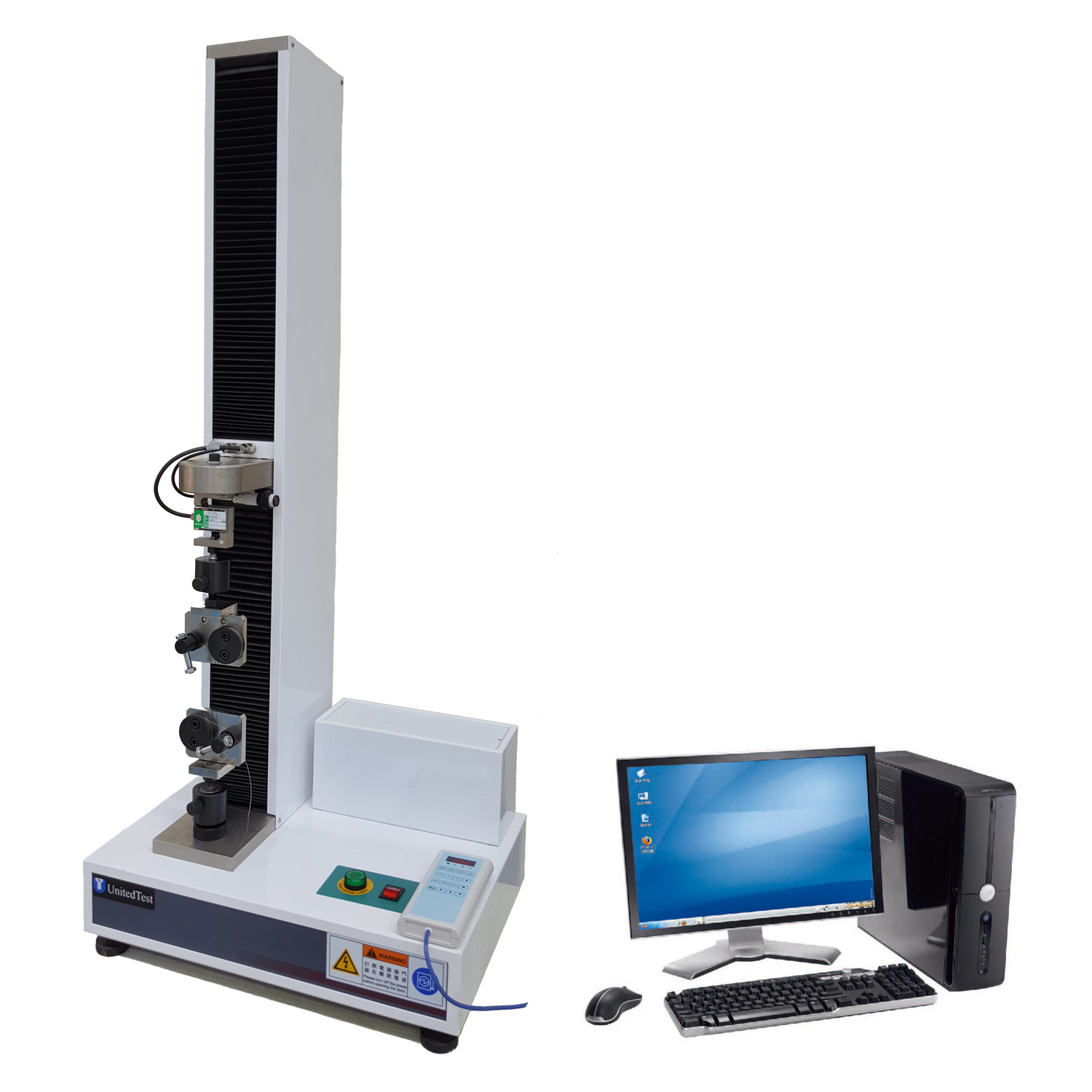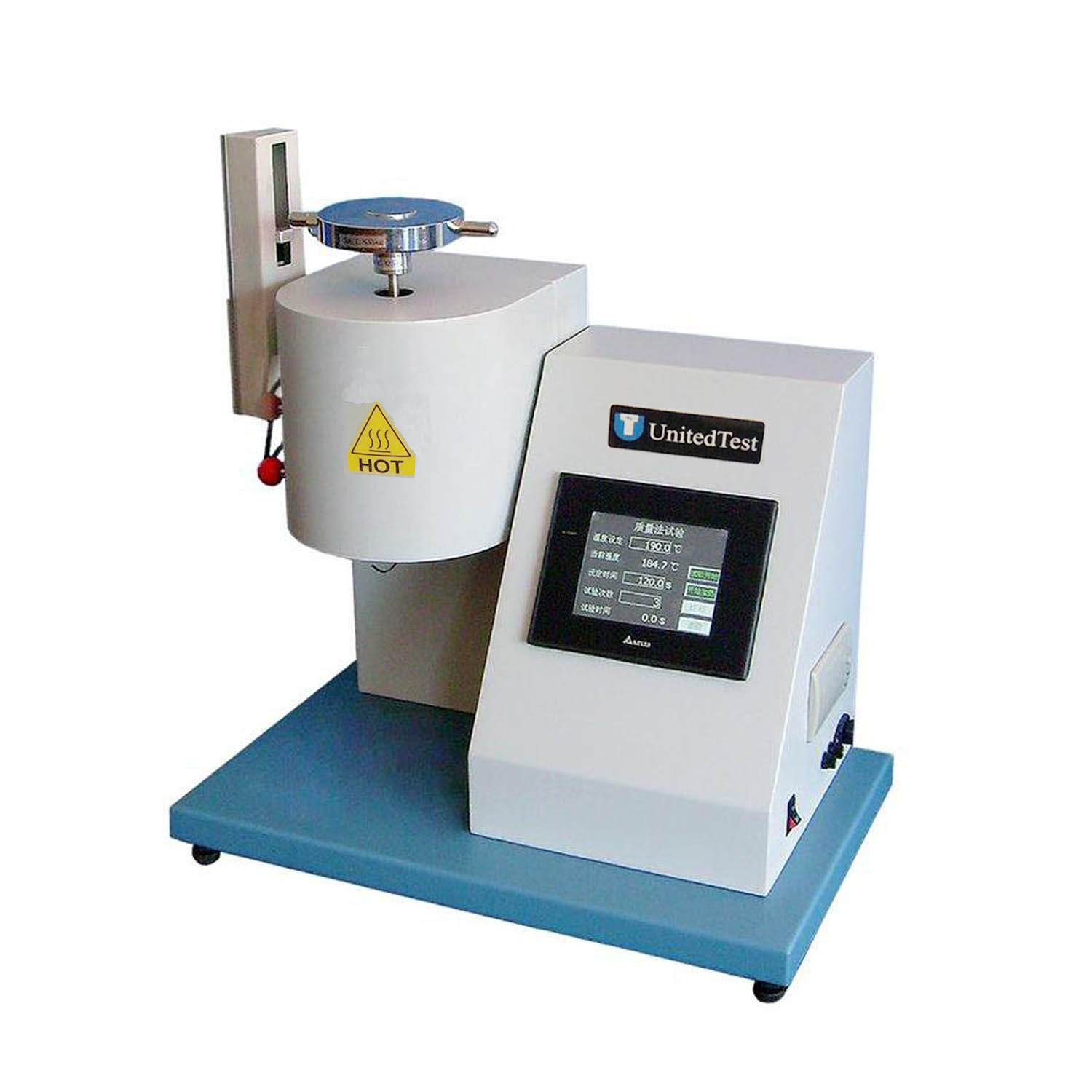Thermoplastic Elastomer (TPE) compounds test
1) Tensile Strength and Elongation Testing
Test Standard: ASTM D 412
Aim: evaluate the material's ability to withstand stretching forces without breaking and to measure how much it can elongate before failure. This helps determine the material's strength, flexibility, and suitability for applications where tensile forces are present, ensuring it meets performance and safety standards.
Test Device: universal testing machine (UTM)
2) Tear Strength Test
Test Standard: ASTM D 624
Aim: Measuring the tear resistance of thermoplastic elastomers.
Test Device: universal testing machine (UTM)

3), Compression Set
Test Standard: ASTM D 395
Aim: Evaluate the material's ability to return to its original shape after prolonged compression. This helps determine the material's long-term elasticity, durability, and suitability for applications requiring resistance to permanent deformation.
Test Device: Compression set tester
4), Hardness Testing
Test Standard: ASTM D 2240
Aim: determine the material's hardness, which helps assess its suitability for different applications. This ensures the TPE meets the required levels of softness or firmness for optimal performance in specific products.
Test Device: Shore Durometer (A&D)
5), Density Measurement
Test Standard: ASTM D 792
Aim: determine the material's mass per unit volume, which helps ensure consistency in product quality, performance, and suitability for specific applications. This data is crucial for material selection, production control, and meeting industry standards.
Test Device: Analytical balance and density kit
6), Melt Flow Index (MFI)
Test Standard: ASTM D 1238
Aim: Measuring the melt flow index of molten thermoplastic elastomers.
Test Device: Melt Flow Index tester
7), Color Measurement (L.a.b.)
Aim: Measuring the lightness (L value), red-green (a value), and yellow-blue (b value) of thermoplastic elastomers.
Test Device: Colorimeter
8), Kinematic Viscosity Test
Aim: Measuring the viscosity of liquids or dissolved solids.
Test Device: Kinematic viscometer
9), Humidity Test
Aim: Measuring the humidity of thermoplastic elastomers by quantifying weight loss.
Test Device: Hygrometer
10), Odor Test
Aim: Grading thermoplastic elastomers based on odor levels.
Test Device: Odor vial
11), UV Aging Test
Test Standard: ASTM D 471
Aim: Observing the changes in thermoplastic elastomers under ultraviolet light.
Test Device: UV aging test chamber
12), Physical Aging Test
Aim: environmental conditions such as heat, humidity, UV light, or mechanical stress.
Test Device: Aging Oven
13), DIN Abrasion Test
Test Standard: DIN 53516
Aim: evaluate the material's resistance to wear and tear under abrasive conditions.
Test Device: DIN Abrasion Tester
14), Scuff Test
Aim: Testing the abrasion resistance of EVA foam material
Test Device: Scuff Tester
15), Rebound Test
Test Standard: Testing the elasticity index of EVA foam material
Test Device: Pendulum Rebound Tester
16), TGA – thermogravimetric analysis
Test Standard: ISO 11358-1
Purpose: To perform thermogravimetric analysis to determine the temperature and rate of polymer decomposition
and the amount of volatile, moderately volatile substances, additives, and/or fillers in the polymer structure.
Test Equipment: Thermogravimetric Analyzer
17), DSC – differential scanning calorimetry – determination of melting and crystallization temperatures
Test standard: ISO 11357-1, ISO 11357-3
Purpose: To determine the melting and crystallization temperature and enthalpy of crystalline or semi-crystalline polymers.
Test Equipment: Differential Scanning Calorimetry
18), DSC – differential scanning calorimetry – determination of glass transition temperature (TG)
Test standard: ISO 11357-1, ISO 11357-2
Purpose: To determine the glass transition temperature (Tg) of amorphous or semi-crystalline polymers.
Test Equipment: Differential Scanning Calorimetry
19) FTIR – Fourier transform infrared spectroscopy – qualitative analysis
Test Standard: ASTM E 1252
Purpose: To define the structure and functional groups of polymers.
Test equipment: FTIR-Fourier Transform Infrared Spectrophotometer
20) Atomization test
Test Standards: ISO 6452, PV 3015 – Weight (mg), Refractive Index (%)
Purpose: The fog test is used to determine the number of volatile structures inside thermoplastic elastomers that can migrate into the environment during use.
Test equipment: fog tester
21), Izod and Charpy impact tests
Test standard: ASTM D 256
Purpose: To measure the impact resistance of materials. Calculate the kinetic energy required to crack and break the material.
Test device: Impact test device
22) Gloss measurement
Test standard: ASTM D 523
Purpose: To measure the glossiness of thermoplastic elastomer surface.
Test Equipment: Gloss Meter
23) Scratch and wear test
Test Criteria: None
Purpose: The edges of a thermoplastic elastomer determine its scratch and abrasion properties.
Test device: Abrasion test device
24) Smell test
Test standard: VDA 270
Purpose: Thermoplastic elastomers are classified according to their odor level.
Test equipment: oven, beaker
25) Weather instrument test
Test standards: ASTM D 2565, ASTM D 4459, ISO4582
Purpose: To simulate the long-term exposure of thermoplastic elastomers to environmental conditions such as temperature, light or humidity. Analyze color changes and/or other surface changes when cracked/scratched.
Test equipment: Weatherproof cabinet
26) Polymer gel content test
Test Standard: None
Purpose: To calculate the percent crosslinking of thermoplastic vulcanizates.
Test Device: Soxhlet Extraction Mechanism
27) Horizontal flammability test
Test standard: UL 94-HB
Purpose: The flammability of thermoplastic elastomers is determined horizontally.
Test device: Horizontal flame chamber
28) Mooney viscosity test
Test standard: ASTM D 1646
Purpose: To measure the Mooney viscosity value of rubber.
Test Equipment: Mooney Viscometer
29), Moisture Test
Test Standard: Quantitatively measuring the moisture content of thermoplastic elastomers by weight loss.
Test Device: Moisture Analyzer
 Global links
Global links



